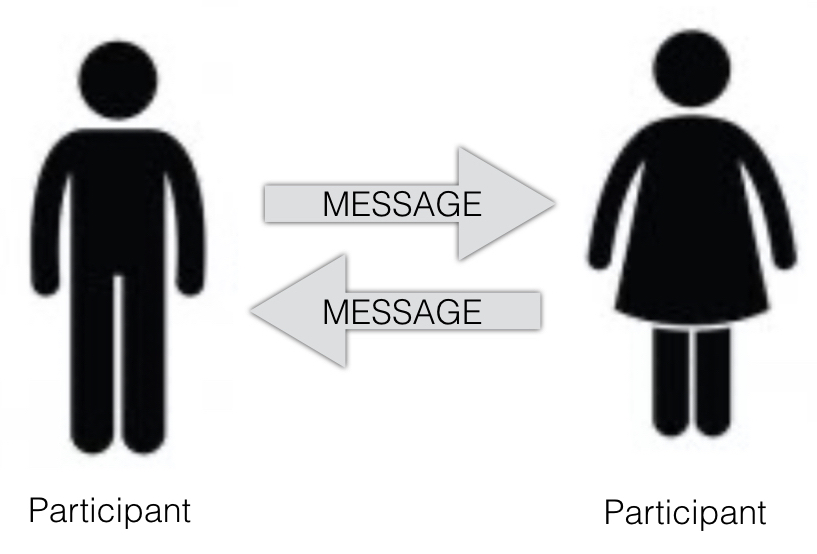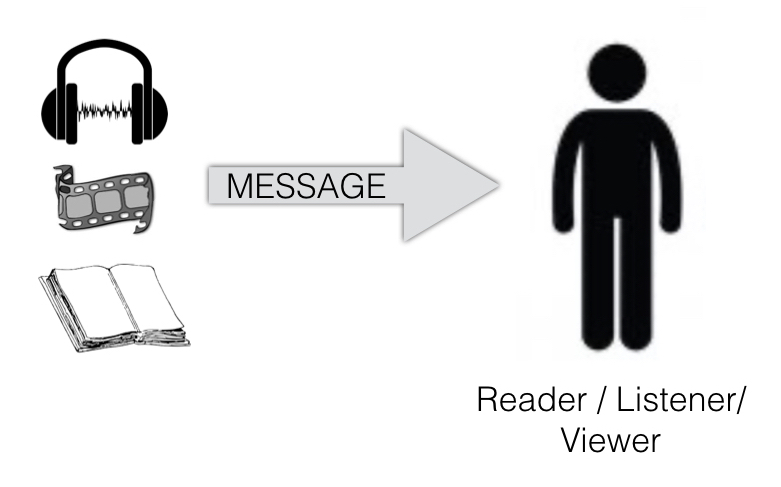Example Lesson Plan Analysis
The interpretive reading lesson included in this example is found at the end of a chapter addressing the topic of things to do in the city. This is the third chapter of an introductory textbook intended for postsecondary learners, and is thus part of a first-semester French curriculum. In this example, the lesson is considered within the learning objectives, language forms, and cultural content for the chapter as a whole.
Each part of the checklist asks you to analyze the lesson using multiliteracies principles. To facilitate this work, key terms are underlined. Whenever you are unsure of a term’s meaning, hover over it and a definition will appear in a floater box.
PART I: Contextualize Your Lesson
The information below provides a context for the interpretive reading lesson based on the textbook chapter in which it occurs.
| Teaching Context | 1st semester French; postsecondary | |||||
| Chapter / Unit Learning Objectives | Students will be able to…
|
|||||
| Chapter / Unit Language Forms (grammar and vocabulary) |
|
|||||
| Chapter / Unit Cultural ContentProducts: the tangible (e.g., paintings, monuments, literature, clothing, etc.) or intangible (e.g., ritual, education systems, laws, etc.) creations of a particular culture. They reflect a culture’s perspectives.
Example: anti-aging / beauty / wrinkle creams Practices: Patterns of social interactions and behaviors. What to do, where to do it and how to interact within a particular culture. Reflect a culture’s perspectives and may involve the use of a culture’s products. Example: getting botox, coloring hair Perspectives: The values, beliefs, attitudes, and philosophical perspectives of a society; a culture’s view of the world. Inform a culture’s products and practices. Example: youth is beautiful and highly valued |
|
|||||
| Authentic Text(s) | Blog post & comments: Montréal, c’est ma ville! | |||||
| Communicative Mode(s) |
Interpersonal Interpersonal communication: Interaction and meaning negotiation in spontaneous spoken, written, or signed conversations. Exploring relationships, shared assumptions, conventions, imagination, creativity, and emotions that are grounded in understandings of textual content. Oral/aural and written.
Interpretive Interpersonal communication: Interaction and meaning negotiation in spontaneous spoken, written, or signed conversations. Exploring relationships, shared assumptions, conventions, imagination, creativity, and emotions that are grounded in understandings of textual content. Oral/aural and written.
Interpretive Interpretive communication: Reader, listener or viewer constructs meaning (e.g., interprets, understands, analyzes) from a written, audio, audiovisual, or digital text. No possibility of negotiating meaning. Aural and written communication.
Presentational Interpretive communication: Reader, listener or viewer constructs meaning (e.g., interprets, understands, analyzes) from a written, audio, audiovisual, or digital text. No possibility of negotiating meaning. Aural and written communication.
Presentational Presentational communication: Sharing information and ideas to an (often) distant audience in order to inform, explain, persuade, and narrate on various topics. Demonstrating awareness of communicative conventions relevant to the text type, context, and audience. No opportunity for negotiating or clarifying meaning. Oral and written. Presentational communication: Sharing information and ideas to an (often) distant audience in order to inform, explain, persuade, and narrate on various topics. Demonstrating awareness of communicative conventions relevant to the text type, context, and audience. No opportunity for negotiating or clarifying meaning. Oral and written.
|
|||||
| Lesson Source | Textbook Website Instructor Other | |||||
| Terrell, T. D., Rogers, M., Kerr, B., & Spielmann, G. (2012). Deux mondes: A communicative approach (7th ed.). New York, NY: McGraw-Hill. | ||||||
PART II: Analyze Your Lesson
In this section you will analyze the activities from the textbook lesson using the information from Part I and your understanding of the Knowledge ProcessesWays that students interact with texts to make meaning; foundational types of thinking that students “do to know”. Include four different types of activities students can carry out—experiencing, conceptualizing, analyzing, applying—as they develop their foreign language literacies. Can occur in any order. of multiliteracies pedagogy. First read through the textbook lesson, then answer the questions in the table. At the bottom of the table, follow the directions to compare your analysis against that of the Literacies in Language Education project leaders.
ACTIVITY 1: Instructor leads whole-class brainstorming to elicit students’ previous knowledge about Montreal (e.g., location, size, languages spoken, landmarks, etc.).
ACTIVITY 2: Students read the blog and comments and answer multiple choice questions about place names (i.e., Montreal neighborhoods and suburbs) in the text.
ACTIVITY 3: Instructor leads whole-class discussion on positive and negative points of the city in which they live. Instructor provides topic categories to guide the discussion (e.g., safety, cultural activities, diversity, transportation, etc.).
| ACTIVITY | 1 | 2 |
3 |
| Context Analysis: Enter the number of the corresponding learning objective(s), language form(s), and cultural content (see Part I) that are the specific focus of each activity. If no learning objectives, language forms, or cultural content are targeted by an activity, leave that box blank. |
|||
| Which chapter/unit learning objectives are the focus of this activity? |
1, 2 |
1 |
|
| Which chapter/unit language forms are the focus of this activity? |
1, 3 |
1, 3 |
|
| Which chapter/unit cultural content Products: The tangible (e.g., paintings, monuments, literature, clothing, etc.) or intangible (e.g., ritual, education systems, laws, etc.) creations of a particular culture. They reflect a culture’s perspectives. Example: anti-aging / beauty / wrinkle creams Practices: Patterns of social interactions and behaviors. What to do, where to do it and how to interact within a particular culture. Reflect a culture’s perspectives and may involve the use of a culture’s products. Example: getting botox, coloring hair Perspectives: The values, beliefs, attitudes, and philosophical perspectives of a society; a culture’s view of the world. Inform a culture’s products and practices. Example: youth is beautiful and highly valued is the focus of this activity? |
|||
| Knowledge Processes Analysis: Indicate which knowledge process each activity corresponds to by checking the appropriate box in the table. Note that some activities may correspond to more than one knowledge process. |
|||
| Does this activity engage students in experiencingLearning through immersion in texts, activities, and social situations. Expression of thoughts, reactions, opinions, and feelings about familiar or new experiences, objects, ideas, situations, perspectives, and ways of communicating. Does not involve deep reflection or analysis. .? |
|||
| Does this activity engage students in conceptualizingLearning how language forms, conventions, organization, and other features of texts work to convey meaning. Unpacking texts, practicing skills and knowledge, and explicit learning about textual features helps learners participate more fully in communication. ? |
|||
| Does this activity engage students in analyzingLearning by connecting the content of texts to social, cultural, and historical contexts. Questioning the meaning, importance, and consequences of textual content. Critically reflecting on textual content and its relationship to one’s own culture, perspectives, and learning. ? |
|||
| Does this activity engage students in applyingLearning by using new knowledge, skills, and understandings and by producing language in creative ways. ? |
|||
Reveal the responses of the Literacies in Language Education project leaders.
PART III: Evaluate Your Lesson
Refer to your analysis to help you answer the questions below. Type your answer in the box and then compare it to that of the Literacies in Language Education project leaders.
- Does the lesson align with your chapter/unit learning objectives? Which objectives are not met? Is it important to address these in your revised lesson?
- Does the lesson sufficiently target your chapter/unit language forms or cultural content? What chapter/unit language forms and cultural content are present in your authentic text(s)? How can you address these in your revised lesson?
- Does the lesson include all four Knowledge Processes? Which are absent from the lesson? How can you incorporate missing knowledge processes to ensure that students work with authentic text(s) to express their thoughts and opinions, understand how language forms are used to express ideas, interpret the importance and consequences of ideas, and use language and new knowledge in creative ways?
- Which activities from the original lesson must be adapted or eliminated to address any gaps you identified in #1-3? What new activities do you need to create to help feel these gaps?
The multiple choice reading activity (Activity 2) can be a starting point for ensuring that students have general comprehension of text facts and can provide scaffolding more interpretive activities. Subsequent activities could include classifying comments on the blog post based on whether they present positive or negative views of Montreal, and then comparing these to opinions people might have about their own city. (See Revised Lesson, Activities 4-6)
The post-reading activity in which students describe their own city (Activity 3) isn’t clearly tied to the rest of the lesson. It should either be modified to connect more closely with what students do in the activities that precede it or should be eliminated in favor of a different activity. An alternative would be for students to write a blog post about their own city and then solicit comments from residents and non-residents. (See Revised Lesson, Activities 7-8)
![]() See a revised version of the lesson based on this analysis.
See a revised version of the lesson based on this analysis.
